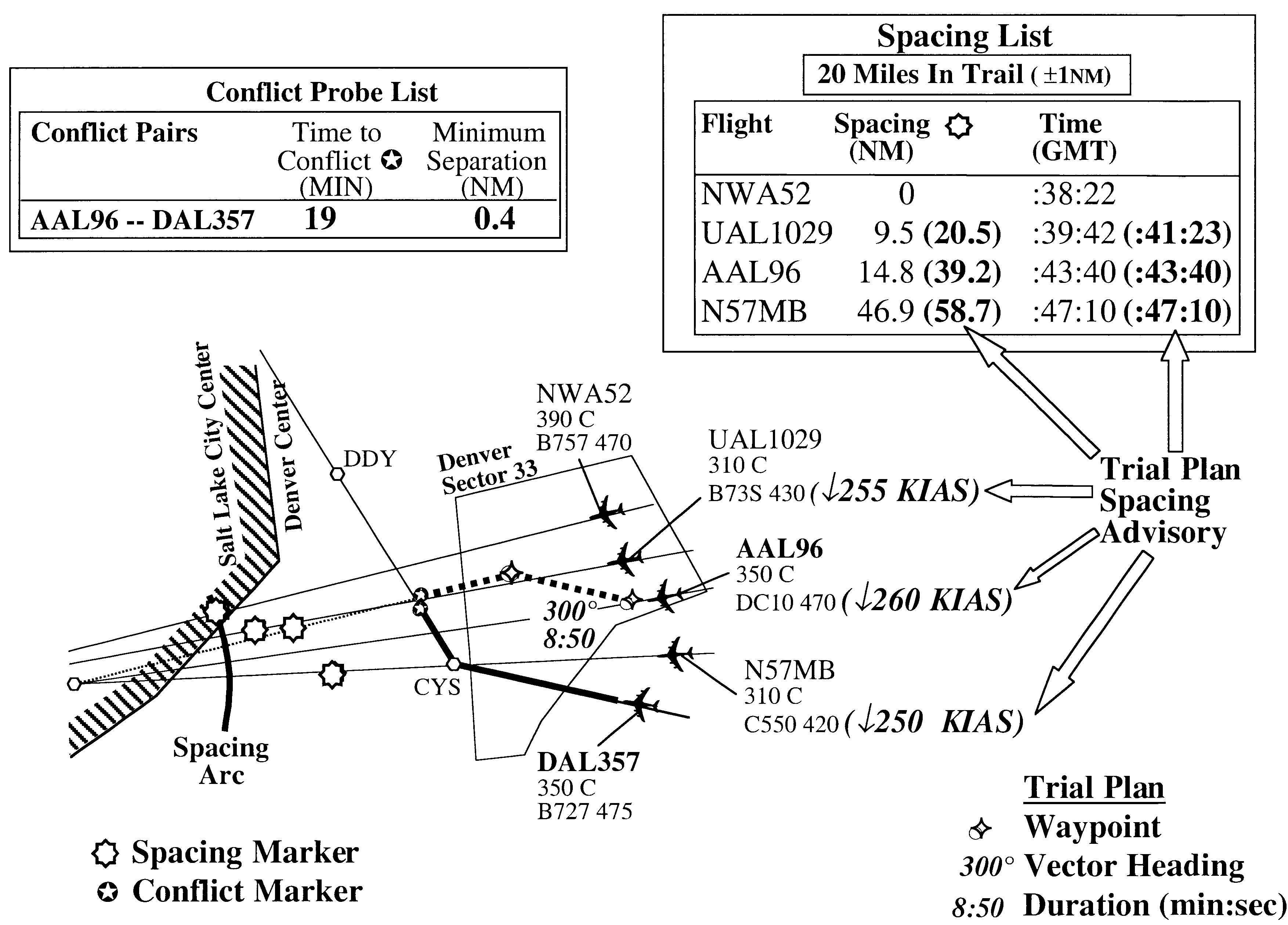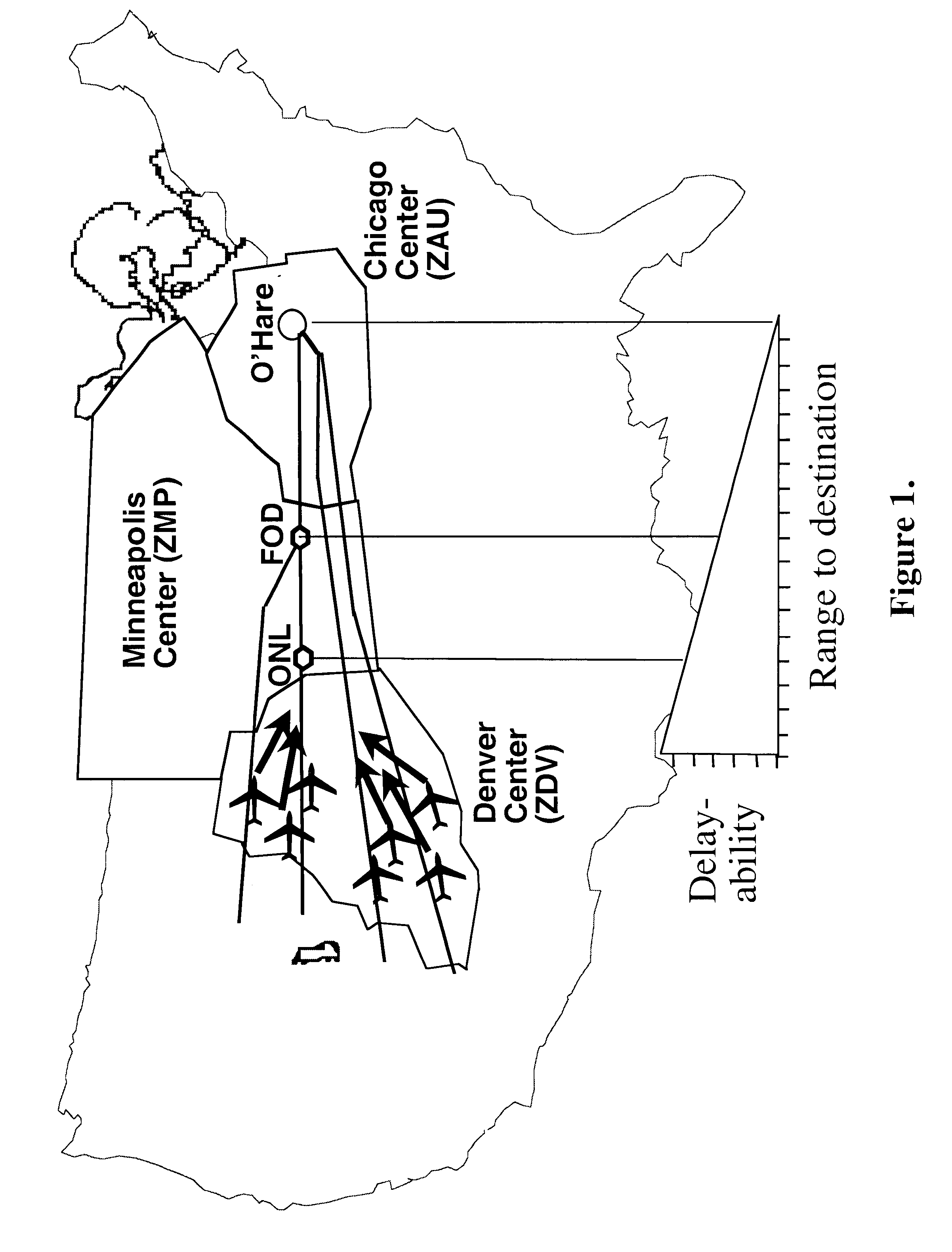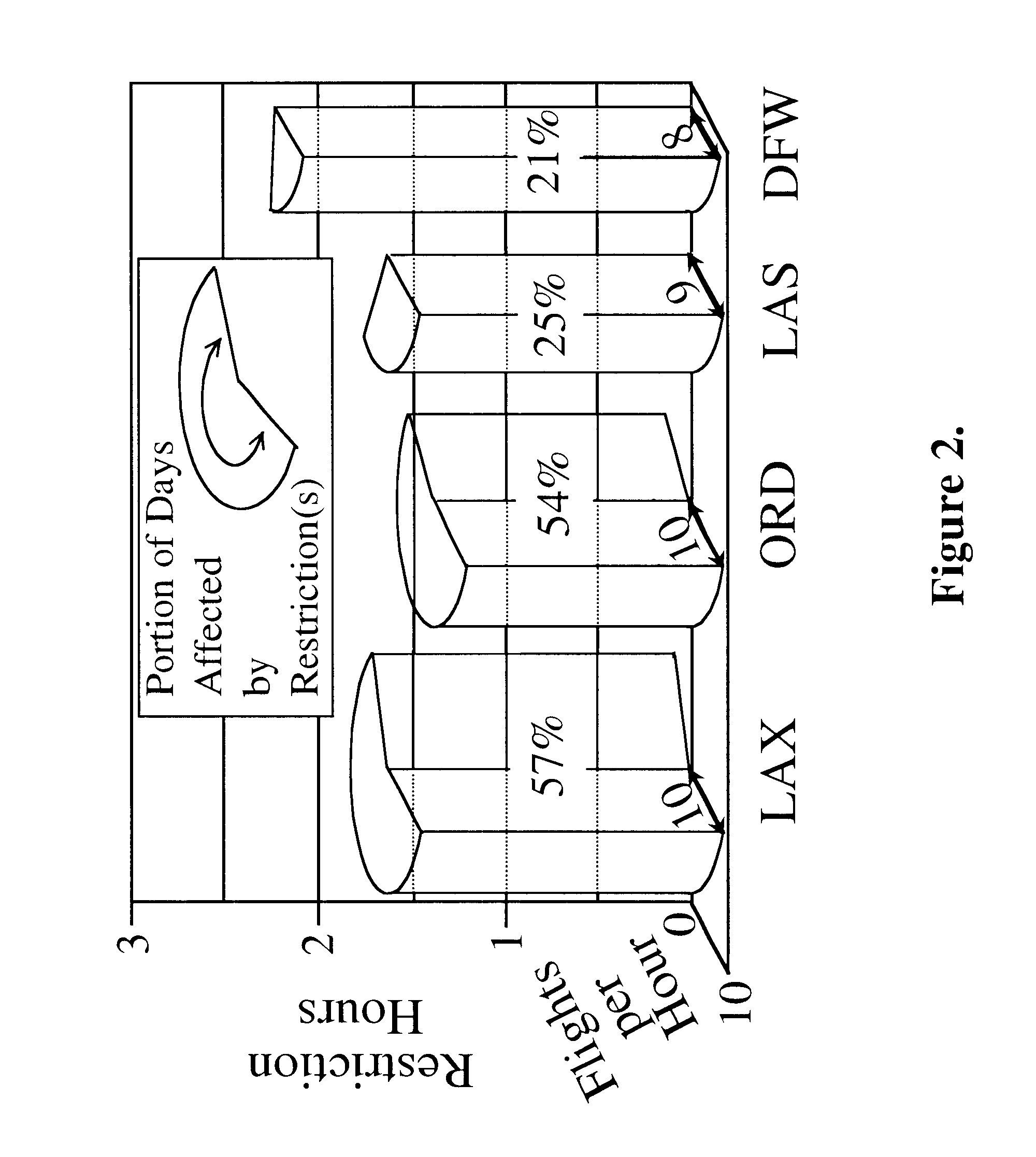En route spacing system and method
a technology of en route spacing and aircraft, applied in direction finders using radio waves, instruments, reradiation, etc., can solve the problems of reducing the performance of conflict-probe decision support, concentrating traffic unnecessarily, and inefficient conformance actions directly affecting airspace users, so as to reduce workload and fuel consumption, avoid conflicts, and reduce the number of corrective clearances
- Summary
- Abstract
- Description
- Claims
- Application Information
AI Technical Summary
Benefits of technology
Problems solved by technology
Method used
Image
Examples
Embodiment Construction
Referring to FIGS. 11-13, the following example scenario illustrates the integration of MIT-spacing conformance of the invention with conflict detection and resolution. The figures represent a simplified depiction of the tool's graphical interface from a 1996 version of CTAS. Note that the figures illustrate the spacing data in a tabular list, but the same data could also or instead be displayed on the aircraft's data tag. Providing an option to a controller permits the controller see all the data in one location even if aircraft are graphically located all over the display (or are off the display), or lets the controller see the data for each aircraft on the aircraft's tag which is located graphically where the aircraft position is.
To reiterate, the display of spacing-conformance analysis may be accomplished in a variety of ways depending on the operational considerations of the ATC facilities and controllers using the tool (or the operational limitations of the ATC computer / displa...
PUM
 Login to View More
Login to View More Abstract
Description
Claims
Application Information
 Login to View More
Login to View More - R&D
- Intellectual Property
- Life Sciences
- Materials
- Tech Scout
- Unparalleled Data Quality
- Higher Quality Content
- 60% Fewer Hallucinations
Browse by: Latest US Patents, China's latest patents, Technical Efficacy Thesaurus, Application Domain, Technology Topic, Popular Technical Reports.
© 2025 PatSnap. All rights reserved.Legal|Privacy policy|Modern Slavery Act Transparency Statement|Sitemap|About US| Contact US: help@patsnap.com



